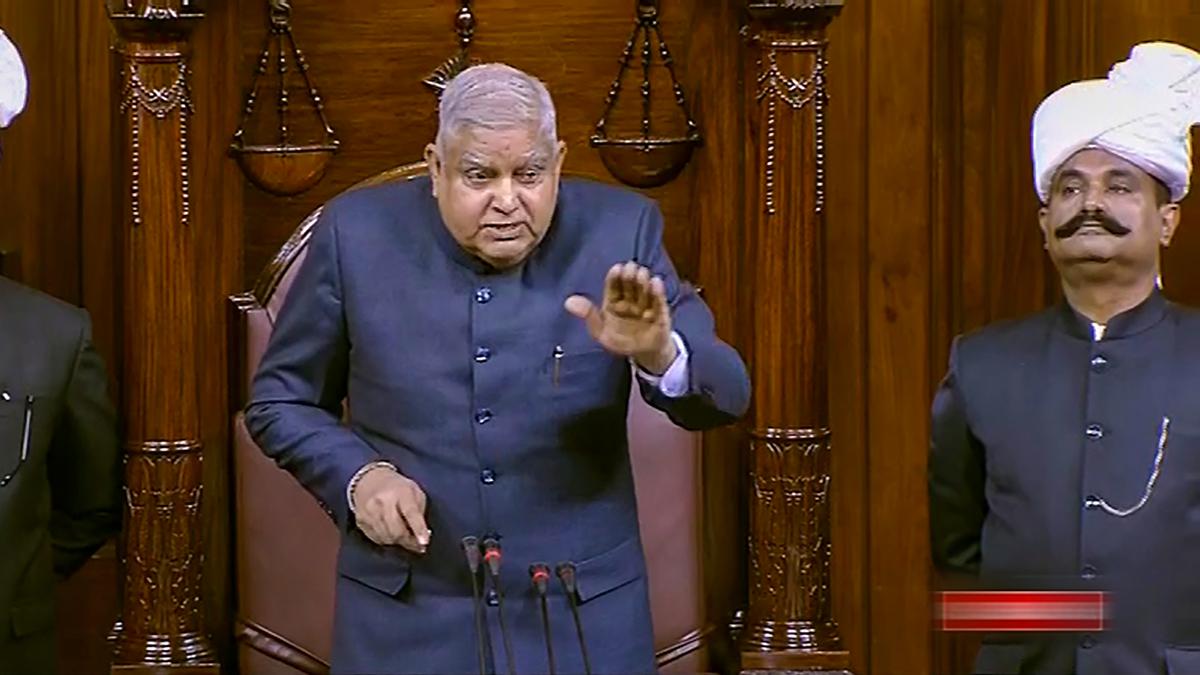
The Vice President criticised the two Houses for failing to acknowledge, throughout the previous seven years, the 2015 Supreme Court decision invalidating the Constitutional amendment creating the National Judicial Appointments Commission (NJAC).
Background
- Judiciary and Executive have been at odds for a short while.
- The VP emphasised that the amendment had received unprecedented support from both Houses and endorsement from 16 State Assemblies before being ratified.
- On October 16, 2015, the Supreme Court overturned the legislation, finding that it did not adhere to the fundamental principles of the Constitution.
NJAC
- In contrast to the current collegium system, the NJAC was a body that was planned to be used to appoint Chief Justices, Supreme Court justices, and High Court judges.
- It aimed to displace the system of colleges.
- The National Judicial Appointments Commission Bill, 2014, which proposed it,
- Both the Lok Sabha and the Rajya Sabha approved the bill, and the President also gave his approval.
- The 2014 99th Constitutional Amendment Act created the commission.
- According to the Act, the NJAC would be made up of representatives from the judicial, legislative, and civil society sectors.
Composition
- The NJAC’s chairman will be the Chief Justice of India.
- two of the Supreme Court’s most seasoned judges
- The Minister of Law and Justice
- A committee made up of the Prime Minister, the Chief Justice of India, and the Leader of the Opposition will choose two distinguished individuals.
Why was the NJAC Act struck down?
- The NJAC Act and the 99th Constitutional Amendment Act were both invalidated by the SC bench’s five judges in a 4:1 vote.
- A five-judge panel, commonly known as the Fourth Judges Case, revoked it in 2015.
- It was ruled to be “unconstitutional” and overturned because it had a negative impact on the judiciary’s independence.
Pros of the NJAC Act
- The NJAC Act received commendation from Justice Chelameshwar because
- Transparent selection process: It involves a simple and open selection process for judges.
- brings checks and balances: The disintegration of the Constitution’s fundamental framework results from the absence of the checks and balances principle.
- aims for power balance: In a democratic system, the executive cannot be entirely shut out.
- Global examples: The United States of America was used as an example in the dissent order, where the head of the Executive is given the authority to appoint judges.
Concerns with collegium system
- Alleged favouritism: The collegium system expands the scope of favouritism because it doesn’t offer any rules or criteria for the selection of Supreme Court judges.
- Process that is ambiguous: The lack of an administrative body is also cause for concern because it means that the collegium system’s members are not accountable for choosing any of the judges.
- Isolating the executive: The check and balance principle is essential for preventing any democratic institution from abusing its authority.
- Extra-constitutional nature: The collegium system informs us that, despite the fact that it is not listed in the Constitution anywhere, it has instead developed over time from a number of significant instances.
- Lack of transparency: Due to lax standards for appointing judges, nepotism has been frequently observed in the legal system.
Way ahead
- NJAC needs to be changed to keep the judiciary independent.
- Justice Deepak Gupta contends that the group responsible for choosing judges has to include senior retired civil workers.
- The Supreme Court must establish rules for selecting justices, and those rules must be codified and rigidly adhered to.
In addition, all notifications should be made public to increase transparency in the process.
